Idea by
Chiara Quinzii, Diego Terna
Quinzii Terna Architecture
Call for ideas 2016
3X3X3
3X3X3
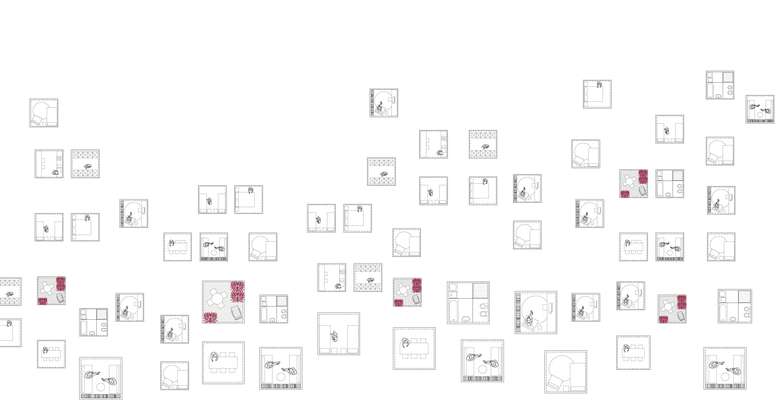
We believe that the interior spaces of a collective residence may no longer be the subject of a general project which manages to include, in a single architectural organism, all the needs of the different people who will live there.
The spaces of a house have to be DOMESTICATED by their inhabitants: the experience of the big furnitures malls, such as Ikea, teaches us that every family has a strong interest in adapting the space of their home according to their needs.
We propose, therefore, an architectural organism which is able to change according to the needs of each person, without losing its unity and the economies of scale of the collective aggregation. No more mass housing, but DOMESTICATED HOMES, up to their intimacy.
What we propose, therefore, to future inhabitants are SPACES, with a coherent number to the needs of each individual family.
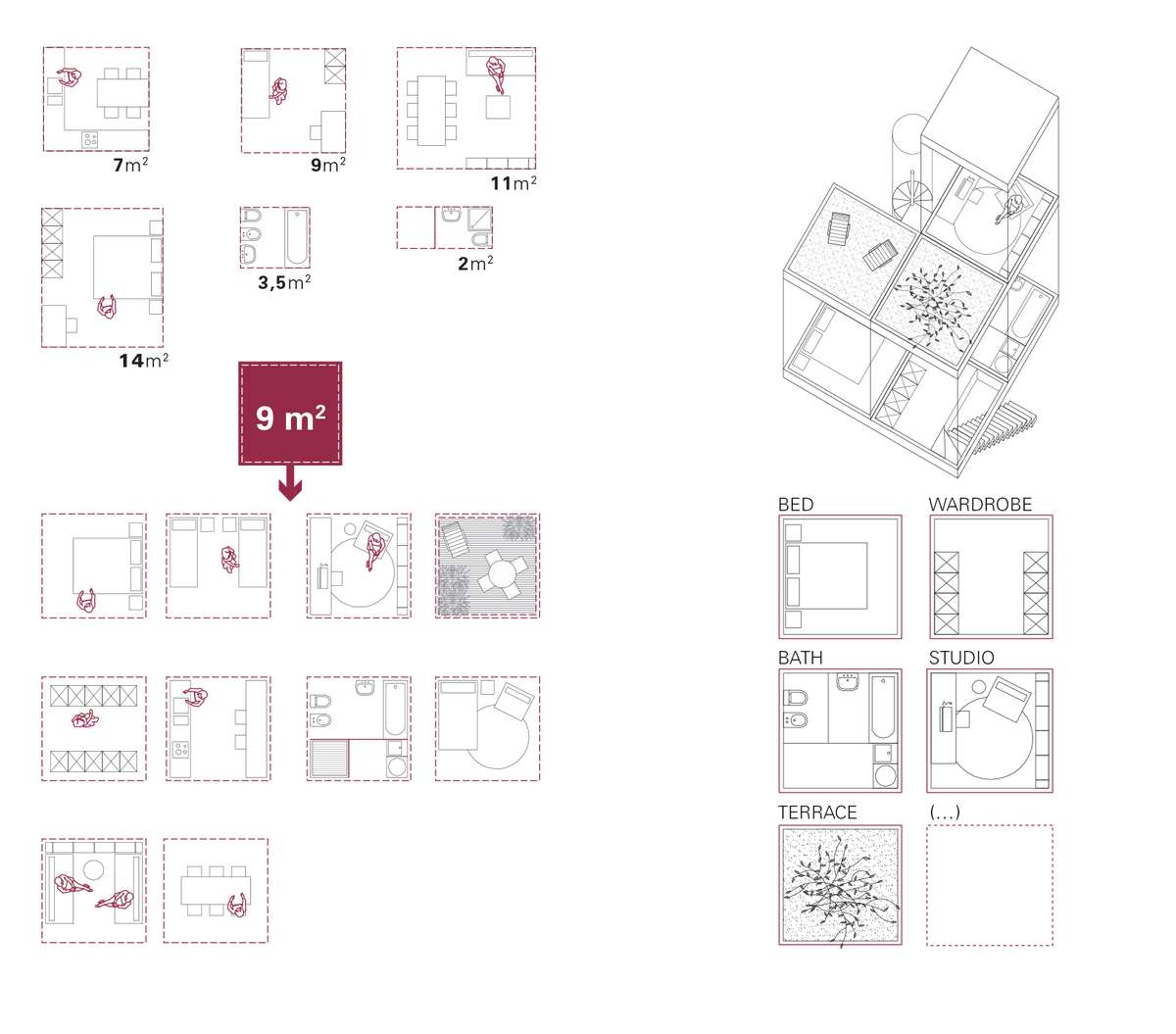
To do this we reduce to the lowest common denominator the canonical "rooms" that compose a house: bedroom, kitchen, living room, study, bathroom. Each of these rooms is defined by a series of ENVIRONMENTS, which divide the surface: in the area of a bedroom, for example, there are the bed, the wardrobe and a small study area.
It is therefore possible to divide each room in primordial environments that define it.
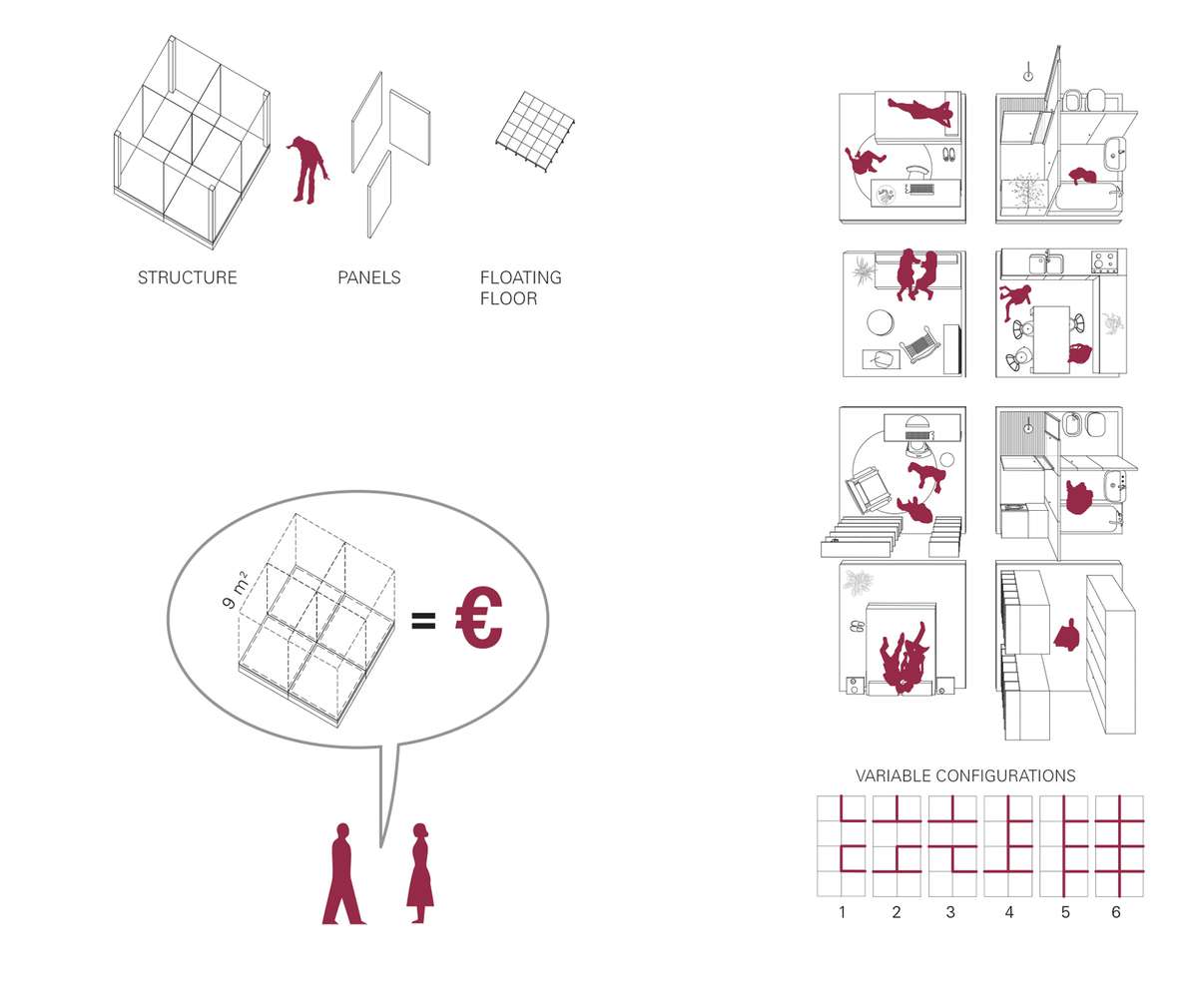
The lowest common denominator that links the environments is a cube of three meters: in this space it is possible to host the PRIMITIVE ENVIRONMENTS that compose the general space of the house.
Each space is transformed into an environment not by architectural reasons, but thanks to the objects that will be placed inside it.
In this way every designed space is susceptible to assume the characteristics of any environment.
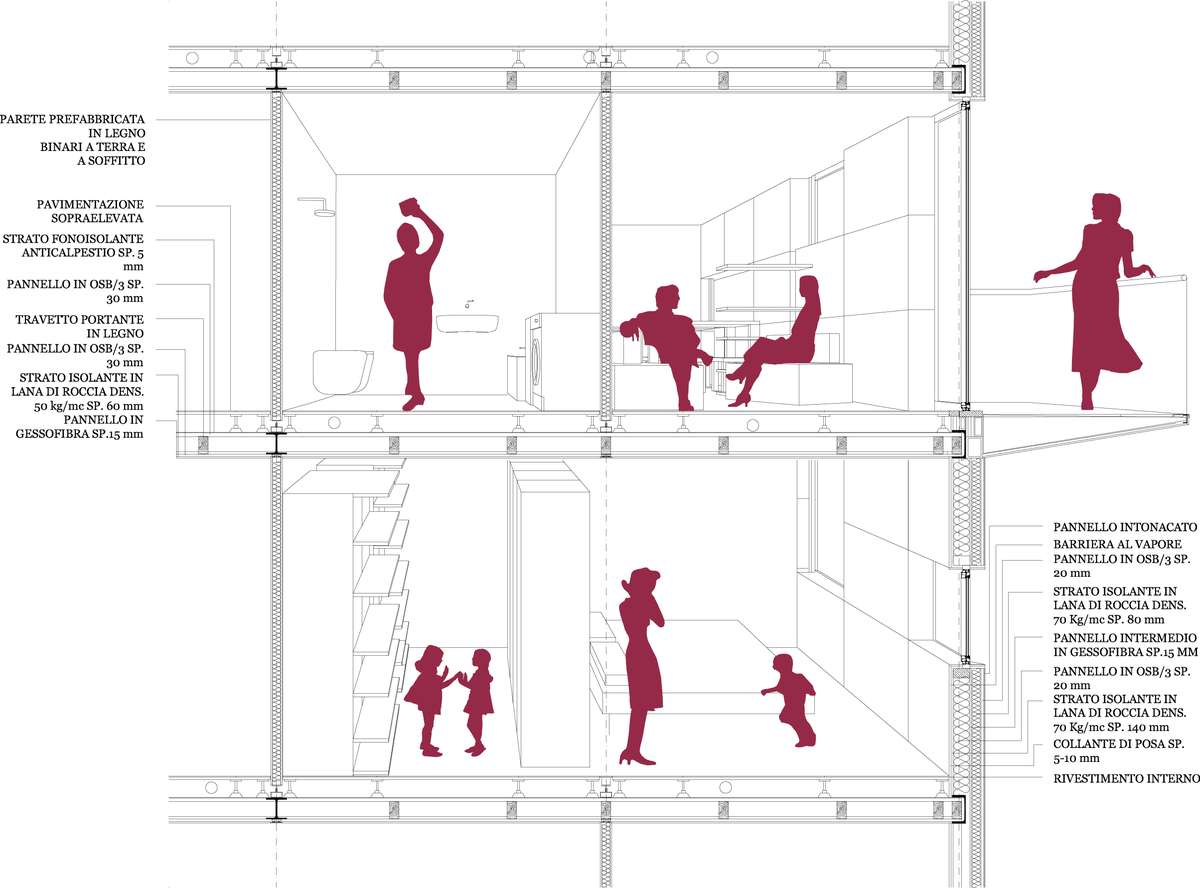
This is enabled by a technological equipment: prefabricated wooden walls, that fasten easily to tracks and a raised floor, designed to permit the placement of the toilet anywhere in the house (thus absorbing the slope of the drain pipe).
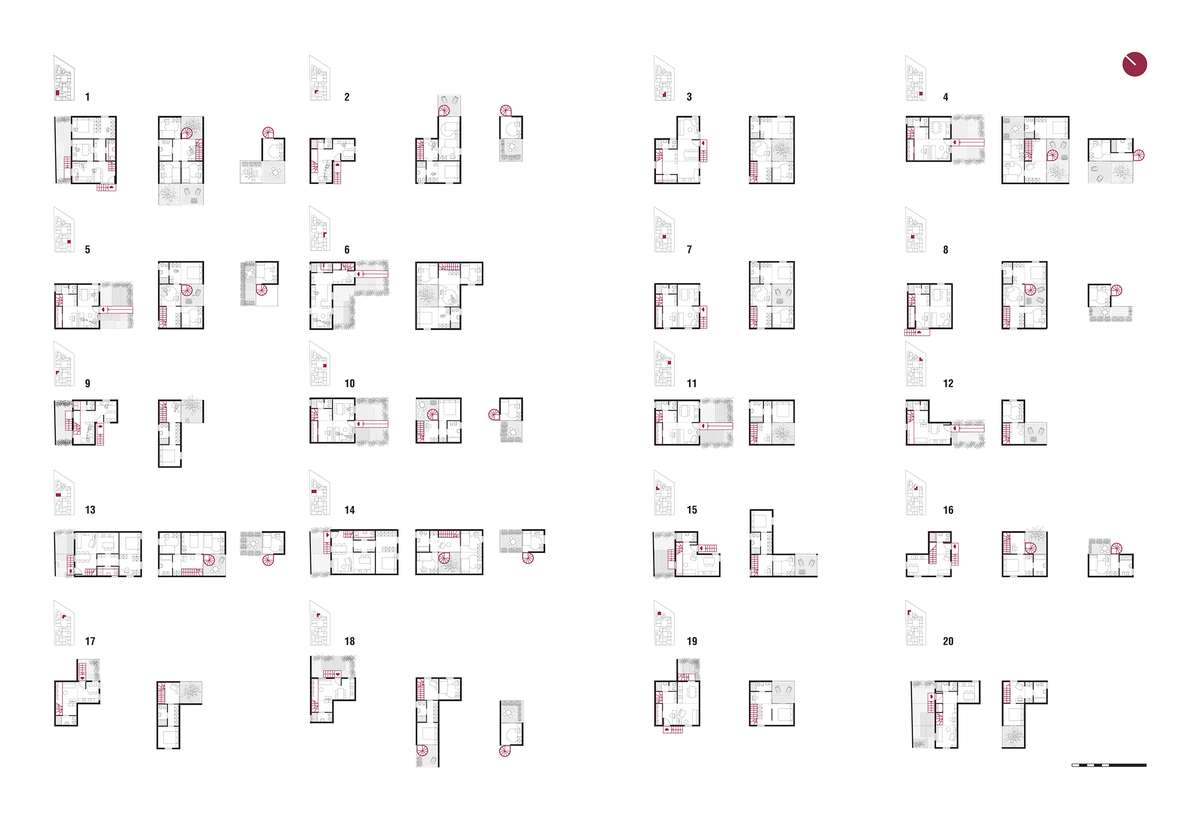
This solution involves three opportunities:
- the ease to the CONFIGURATION CHANGES, total or partial, of the house;
- the possibility to AGGREGATE THE ENVIRONMENTS according to the individual needs of each family;
- the establishment of a sort of shop / warehouse, where one can take the walls and the tools necessary to DESIGN AND BUILD ENVIRONMENTS OF ONE, PERSONAL, HOME.
3X3X3
3X3X3

We believe that the interior spaces of a collective residence may no longer be the subject of a general project which manages to include, in a single architectural organism, all the needs of the different people who will live there.
The spaces of a house have to be DOMESTICATED by their inhabitants: the experience of the big furnitures malls, such as Ikea, teaches us that every family has a strong interest in adapting the space of their home according to their needs.
We propose, therefore, an architectural organism which is able to change according to the needs of each person, without losing its unity and the economies of scale of the collective aggregation. No more mass housing, but DOMESTICATED HOMES, up to their intimacy.
What we propose, therefore, to future inhabitants are SPACES, with a coherent number to the needs of each individual family.
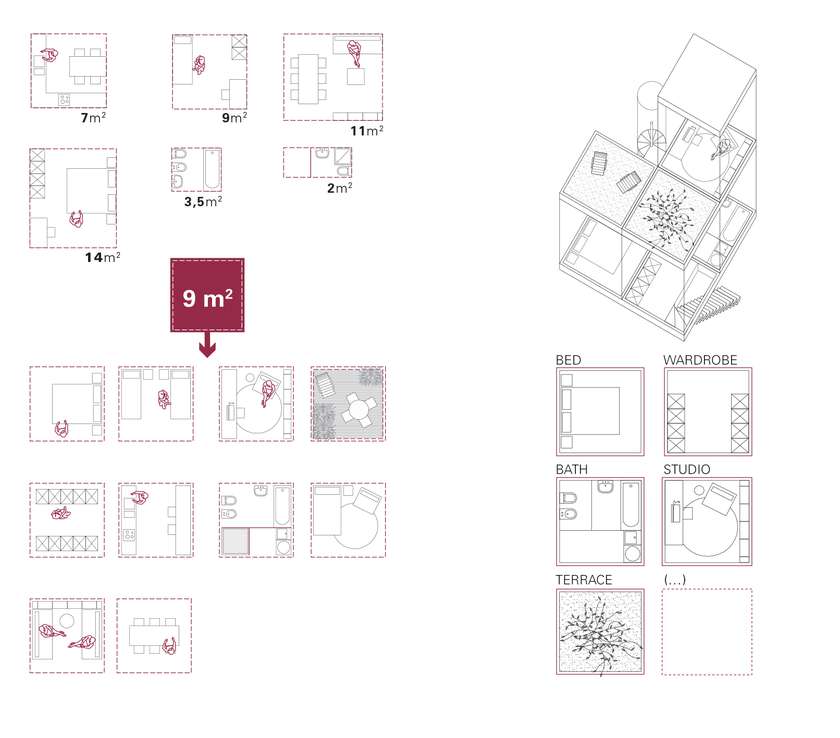
To do this we reduce to the lowest common denominator the canonical "rooms" that compose a house: bedroom, kitchen, living room, study, bathroom. Each of these rooms is defined by a series of ENVIRONMENTS, which divide the surface: in the area of a bedroom, for example, there are the bed, the wardrobe and a small study area.
It is therefore possible to divide each room in primordial environments that define it.
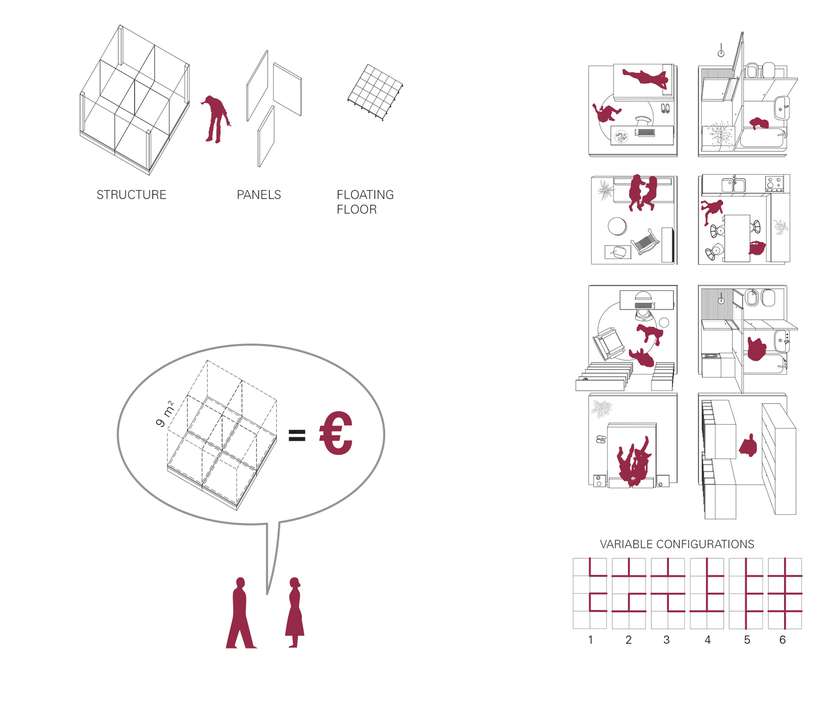
The lowest common denominator that links the environments is a cube of three meters: in this space it is possible to host the PRIMITIVE ENVIRONMENTS that compose the general space of the house.
Each space is transformed into an environment not by architectural reasons, but thanks to the objects that will be placed inside it.
In this way every designed space is susceptible to assume the characteristics of any environment.
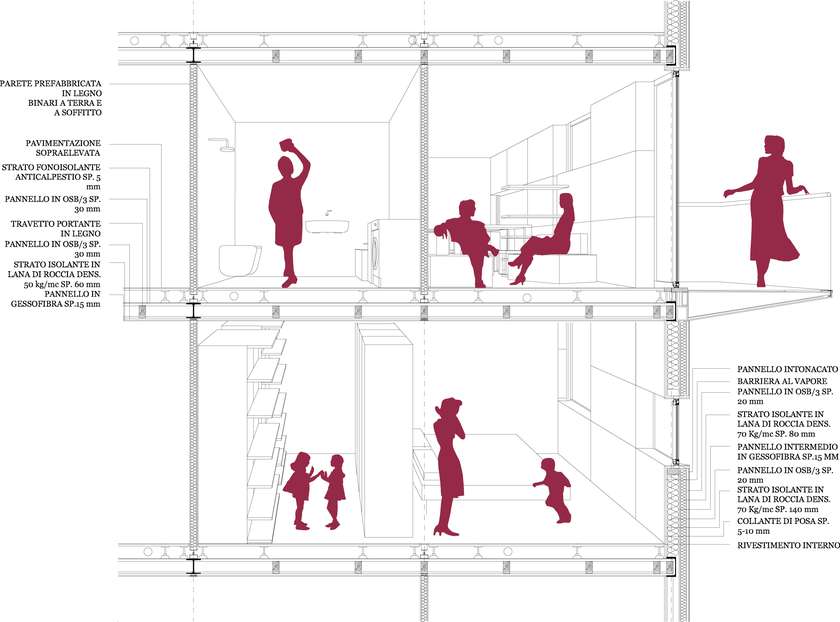
This is enabled by a technological equipment: prefabricated wooden walls, that fasten easily to tracks and a raised floor, designed to permit the placement of the toilet anywhere in the house (thus absorbing the slope of the drain pipe).

This solution involves three opportunities:
- the ease to the CONFIGURATION CHANGES, total or partial, of the house;
- the possibility to AGGREGATE THE ENVIRONMENTS according to the individual needs of each family;
- the establishment of a sort of shop / warehouse, where one can take the walls and the tools necessary to DESIGN AND BUILD ENVIRONMENTS OF ONE, PERSONAL, HOME.